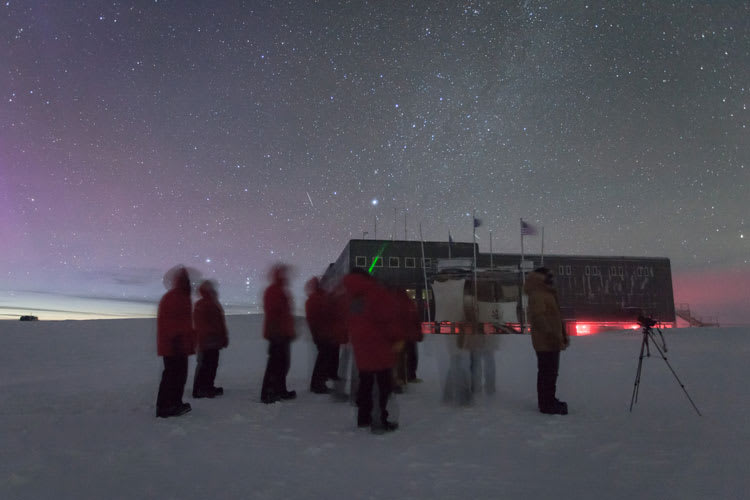
What better time and place for an outdoor astronomy class than midwinter at the South Pole? Clear skies present a group of expectant gazers with a multitude of stars for their viewing pleasure. Antarctica is a large continent—almost 50 percent larger than the continental U.S.—and as such it hosts several distinct climate zones. Although clear skies are never a guarantee, they are more common on the continental high plateau in the central region, around the South Pole, than in the coastal areas. And if you have a clear sky for viewing, maybe it doesn’t matter how cold it is.